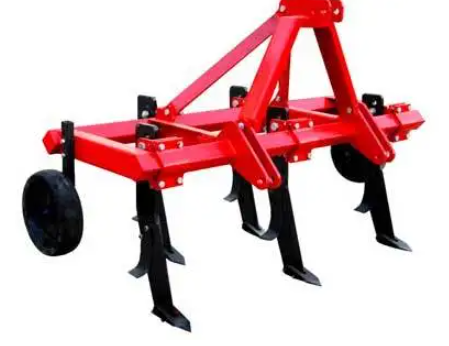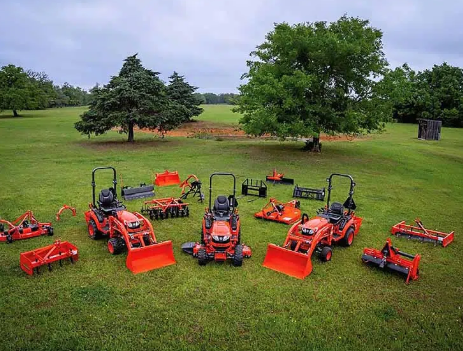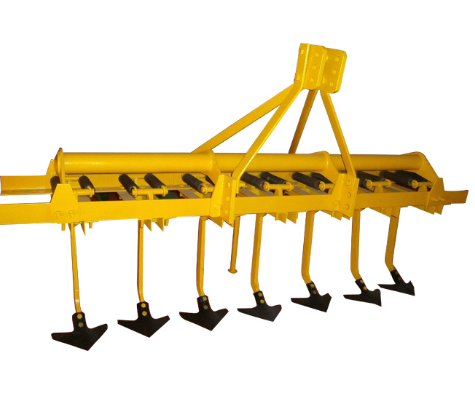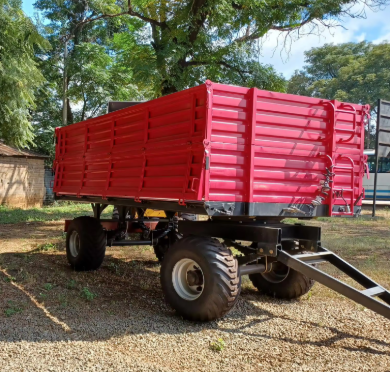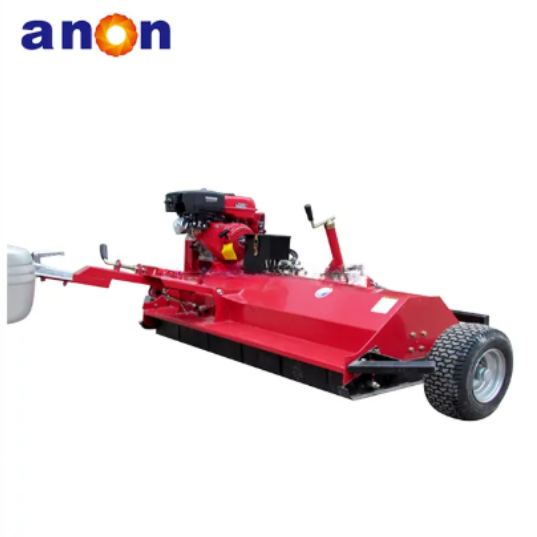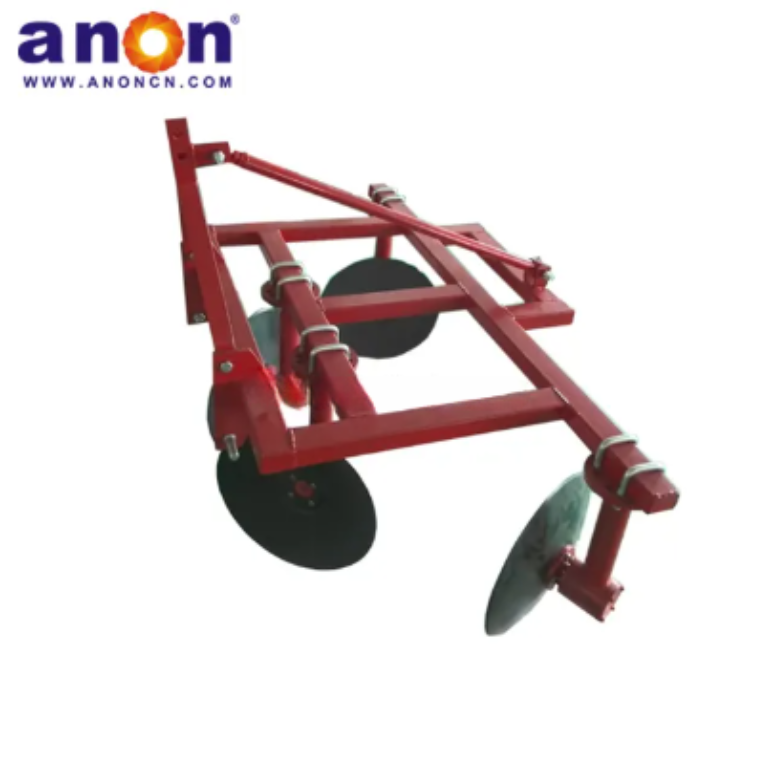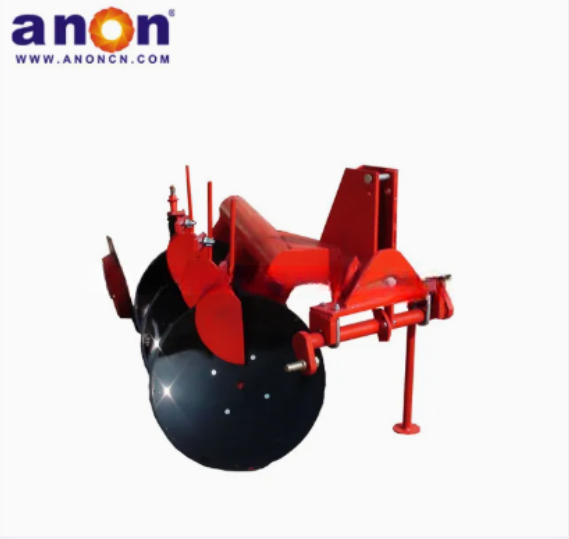Introduction
Have you ever faced serious soil compaction during planting? Soil compaction not only reduces planting efficiency but also lowers the soil’s ability to absorb water, oxygen, and nutrients over time. This directly leads to poor root development and affects crop growth, greatly reducing yields. Don’t worry! A subsoiler can help you break up the deep soil layers. This article will guide you to learn more about subsoilers.
What is a subsoiler?
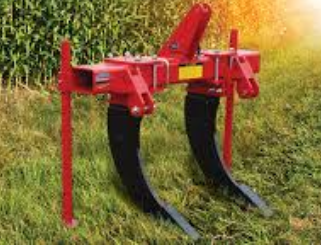
A subsoiler is a type of agricultural machine used to improve soil structure. It breaks the plow pan and loosens deep soil layers and helps you increase soil aeration, water retention, and nutrient-holding capacity. It promotes crop root development and boosts yields. It can also eliminate some weeds, reduce pests and diseases, level the land, and raise the standard of mechanized farming. A subsoiler works with a high-horsepower tractor. It is mainly used for deep soil tillage between crop rows or across the entire field.
How does a Subsoiler work
Components
The components of a subsoiler can be divided into four main categories based on their functions: core working parts, power and transmission parts, support and adjustment parts, and auxiliary working modules. These parts work together to complete the deep loosening of the soil.
Subsoiling tines
The subsoiling shovel is the core working part of the subsoiler. It directly affects the working result and efficiency. Subsoiling shovels are divided into chisel, arrow, and winged shovels.
The chisel shovel has a shovel head that is about the same width as the shank. It has either a flat shape or a rounded ridge shape. The flat shape offers low resistance and high strength. It is suitable for both inter-row and full-field subsoiling. The rounded ridge shape breaks the soil better and also has a turning effect. It works with a smaller width, making it good for interval subsoiling. By adding a punching tool, it can dig deep drainage ditches. Adding wing plates can expand the loosened soil area.
The arrow shovel (also called the duck-foot shovel) has a wider tip than the chisel shovel. It looks like a duck’s foot. It has a strong subsoiling effect and is mainly used for interval subsoiling. Its design increases the soil disturbance ability even further.
Finally, the winged shovel usually has wing plates on both sides and a large tip area. It loosens the surface soil while subsoiling the deeper layers. During work, the wings lift the soil upward. This fully loosens the surface and creates hidden channels below, helping the soil store water and maintain moisture.
Frame and Suspension System
The frame and suspension system support the subsoiler’s efficient operation. They directly affect the machine’s stability, operational flexibility, and tillage quality. The subsoiler uses a three-point suspension system to match the tractor. It features hydraulic lifting for precise control of the working depth and has strong adaptability to various terrains.
Transmission System
The subsoiler is connected to the tractor via the three-point suspension system. The tractor’s power output drives the entire machine forward. The subsoiling shovels do not require additional power; they rely solely on the pulling force to penetrate the soil and perform the tillage. The shovels vibrate while working, which reduces the tillage resistance.
Depth Control Wheel and Compaction Roller
The depth control wheel is used to adjust and control the tillage depth, ensuring uniform working depth. It contacts the soil with its wheel body, limiting the machine’s descent to prevent the tillage from being too shallow or too deep.
The compaction roller is the surface leveling expert. It serves two functions: soil breaking and compaction. It breaks up the compacted soil after subsoiling, compresses the surface layer, reduces water evaporation, and improves moisture retention. The other function is surface leveling. It ensures the soil surface is smooth, which is beneficial for subsequent seeding or no-tillage operations.
Working Principle
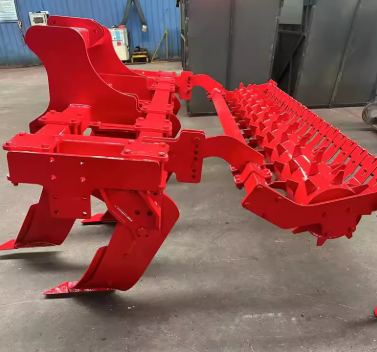
The working principle of the subsoiler is to use a tractor to tow or suspend the subsoiling equipment. The subsoiling components loosen the deep soil, break the plow pan, and improve the soil structure. The key is that it does not disturb the surface soil, but only vertically cuts and loosens the deep soil. At the same time, the depth is controlled with the depth control wheel and compaction roller.
Types of Subsoilers
There are various types of subsoilers. Below are some of the common classifications.
Interval Subsoiler
The interval subsoiler, also known as the inter-row subsoiler, has low working resistance. The spacing of the subsoiling shovels can be adjusted according to actual needs, avoiding the high resistance caused by full-layer subsoiling. After interval subsoiling, a layered soil structure with both solid and loose areas is formed. The loose parts retain water, while the solid parts supply water, making it suitable for low-tillage and no-tillage systems. This reduces surface soil disturbance and protects soil structure.
All-around Subsoiler
The all-around subsoiler typically uses V-shaped blades. During operation, the soil is cut from the bottom of the layer, forming trapezoidal strips. These strips are subjected to multi-directional, unrestricted compression, bending, and stretching, which break and loosen the soil. Its structure is compact, and it has low energy consumption.
It can be classified into two types based on the structure: chisel-type, arrow-shaped shovel-type, winged shovel-type, all-around, and offset column-type.
Multi-functional Subsoiler
The multi-functional subsoiler is a versatile machine that integrates stubble removal, rotary tilling, subsoiling, fertilizing, seeding, and soil covering. Through the coordinated function of the stubble removal system, subsoiling units, soil breaking components, and leveling mechanisms, it completes multiple tasks in one operation.
Vibrating Subsoiler
The vibrating subsoiler is mainly divided into two types: driven and self-excited. The driven vibrating subsoiler uses the tractor’s power output shaft to drive the subsoiling shovels. It vibrates while subsoiling, reducing tillage resistance. The self-excited vibrating subsoiler installs springs with a certain pre-tension on the subsoiling shovels. The compression and extension of the springs cause the shovels to vibrate.
Chisel-type Subsoiler
The chisel-type subsoiler has chisel-shaped working components. It loosens the soil without turning it. In conventional tillage, it is used to break up the compacted soil layers formed at the bottom of the tillage zone due to long-term use of moldboard plows, providing water retention benefits. In low-tillage and no-tillage systems, it is used for deep soil loosening without disturbing the soil layers, while retaining crop residue on the surface to reduce water evaporation and loss.
Arrow-shaped Shovel-type Subsoiler
This subsoiler has a pointed front end that effectively breaks up the plow pan and improves the soil structure. It is suitable for tasks requiring better subsoiling results.
Winged Shovel-type Subsoiler
The winged shovel-type subsoiler has wings on both sides. If a chisel-type subsoiling shovel is used, wings are added to the shovel. It is suitable for situations where high-quality deep loosening is required. By adding wings, the working range of the subsoiler is expanded, improving the subsoiling quality. It helps restore the soil structure and enhances the soil’s ability to retain water and moisture.
Offset Column-type Subsoiler
The offset column-type subsoiler places two subsoiling shovels in a U-shape, using offset shovel handles to expand the tillage range. Its effect is similar to the all-around subsoiler, with a large soil loosening area and excellent soil breaking performance. However, it consumes more power and should be matched with a higher horsepower tractor.
Benefits of Using a Subsoiler
Breaking up Soil Compaction
A subsoiler can penetrate deep into the soil to break the plow pan. By loosening the compacted deep soil layers, it improves soil structure and enhances aeration. More air can enter the soil, increasing oxygen supply to the roots, benefiting microbial activity, and promoting organic matter decomposition.
Improve Soil Water Storage and Moisture Retention Capacity
By breaking up soil compaction, a subsoiler helps improve water infiltration. Rainwater and irrigation water can more quickly penetrate deep into the soil, reducing surface water accumulation and providing a more stable and abundant water supply to plant roots. After subsoiling, soil moisture content increases, and during dry seasons, crops can access deep soil moisture, reducing the risk of yield loss.
Enhancing Root Development and Crop Yields
After deep loosening of the soil, crop root development is promoted. In the loosened soil, roots can penetrate deeper into the soil layers. As the soil nutrients are restored, the rate of nutrient and water absorption by crops also increases. This results in healthier crops with improved drought resistance, wind resistance, and lodging resistance, leading to a significant increase in yields.
Reduce Water Runoff and Erosion
A subsoiler can significantly enhance the soil’s water retention capacity and stability. Rainwater is more likely to infiltrate the soil rather than run off, reducing fertilizer loss and improving water resource utilization. It also helps prevent erosion, strengthens the stability of soil structure, and protects the surface soil from being washed away by rain. This helps maintain soil fertility and prolongs the sustainable use of farmland.
Selecting the Right Subsoiler
Considerations for Soil Type and Field Conditions
When choosing a subsoiler, you need to consider your soil type and field conditions. For heavy clay soils, you should choose a machine with a strong structure, larger shovel angles, and good wear resistance, such as chisel-type, winged shovel-type, or all-around subsoilers. These types have moderate subsoiling distances and can effectively break the plow pan. If your land is sandy soil, you can choose a lighter model with more shovels, providing even soil loosening. For fields with steep slopes or rocky obstacles, you need to consider a subsoiler with good protective features or one with an obstacle-avoidance function.
Matching Subsoiler to Tractor Power
You also need to match the subsoiler to your tractor’s horsepower. On average, each subsoiling shovel requires 20-50 horsepower to operate, depending on the soil hardness. Therefore, you should select a subsoiler that is within your tractor’s horsepower range. A subsoiler that is too large will cause the tractor to be unable to operate effectively, leading to higher fuel consumption and lower operational efficiency. A subsoiler that is too small will not allow the tractor to fully utilize its power, reducing subsoiling effectiveness.
Depth Requirements and Tine Spacing
Finally, you need to consider the depth requirements and tine spacing. Generally, subsoiling depths range from 25-45 cm, with heavier compacted soils requiring a deeper depth. The smaller the tine spacing, the more uniform the soil loosening, but it also requires more power from the tractor. A reasonable selection can balance operational effectiveness and energy consumption.
Maintenance of Subsoiler
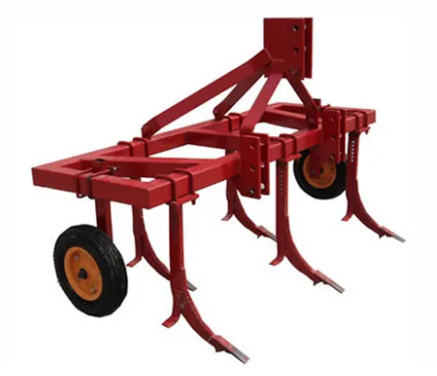
Checking and Sharpening Tines
First, you need to regularly check and sharpen the tines. The tines directly bear the friction and impact of the soil, so regular inspection and maintenance are necessary. After each operation, check if the tines have any cracks, bends, or signs of wear. If the tines become blunt, they should be promptly sharpened to keep them in a sharp condition. Sharp tines can effectively reduce traction resistance, improve soil loosening efficiency, and reduce fuel consumption.
Inspecting Frame and Wear Points
Secondly, long-term use can cause fatigue to the subsoiler’s frame and connection points, so regular checks are needed. For example, check for cracks at the welded joints of the frame, and ensure the connecting bolts are not loose or missing. If any issues are found, they should be promptly reinforced or replaced. Some parts, such as the springs and bearings, are subject to wear and should be checked regularly. If abnormalities are found, replace them in time. Additionally, remember to perform anti-corrosion treatments, especially after working in humid or highly corrosive environments. It is recommended to spray rust-resistant oil on the metal surfaces or perform simple anti-corrosion treatment.
Proper Storage After Use
Good storage habits can greatly extend the service life of the subsoiler. After use, clean the machine’s surface from soil and plant residues to avoid rusting. When storing the machine, it is best to place it in a well-ventilated and dry area, avoiding exposure to rain and sunlight to prevent parts from aging. If not used for a long period, the machine should be supported steadily, avoiding direct contact of the tines with the ground to prevent deformation. Even during the off-season, regular inspections and maintenance should be performed periodically.
Conclusion
By reading this article, we believe you now have a deeper understanding of subsoilers. We hope this article has helped you gain some knowledge about subsoilers and how to choose the right one based on your needs. If you are interested in this product, feel free to contact us at ANON!
FAQ
What is the optimal working depth for a subsoiler?
Typically 40-70cm, depending on soil conditions and crop requirements.
How do I know if my tractor has sufficient power for a subsoiler?
Match the horsepower requirements (typically 60-100 HP per shank) with your tractor’s specifications.
What’s the best time to perform subsoiling?
When soil moisture is appropriate, not too wet or too dry, typically after harvest or before planting.


